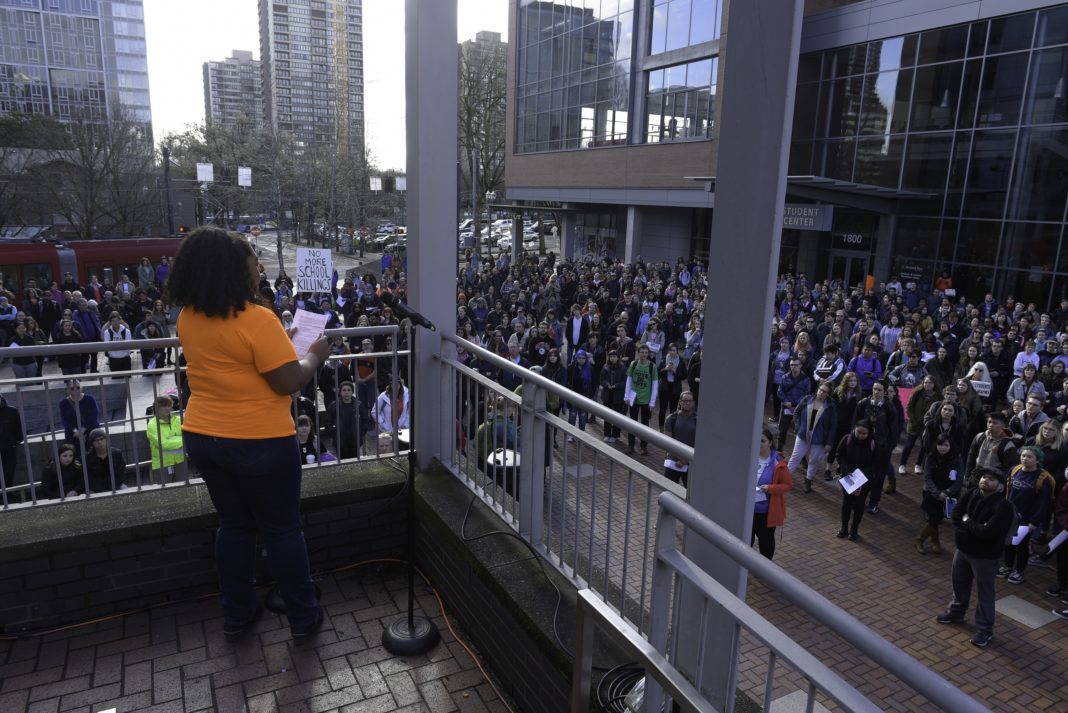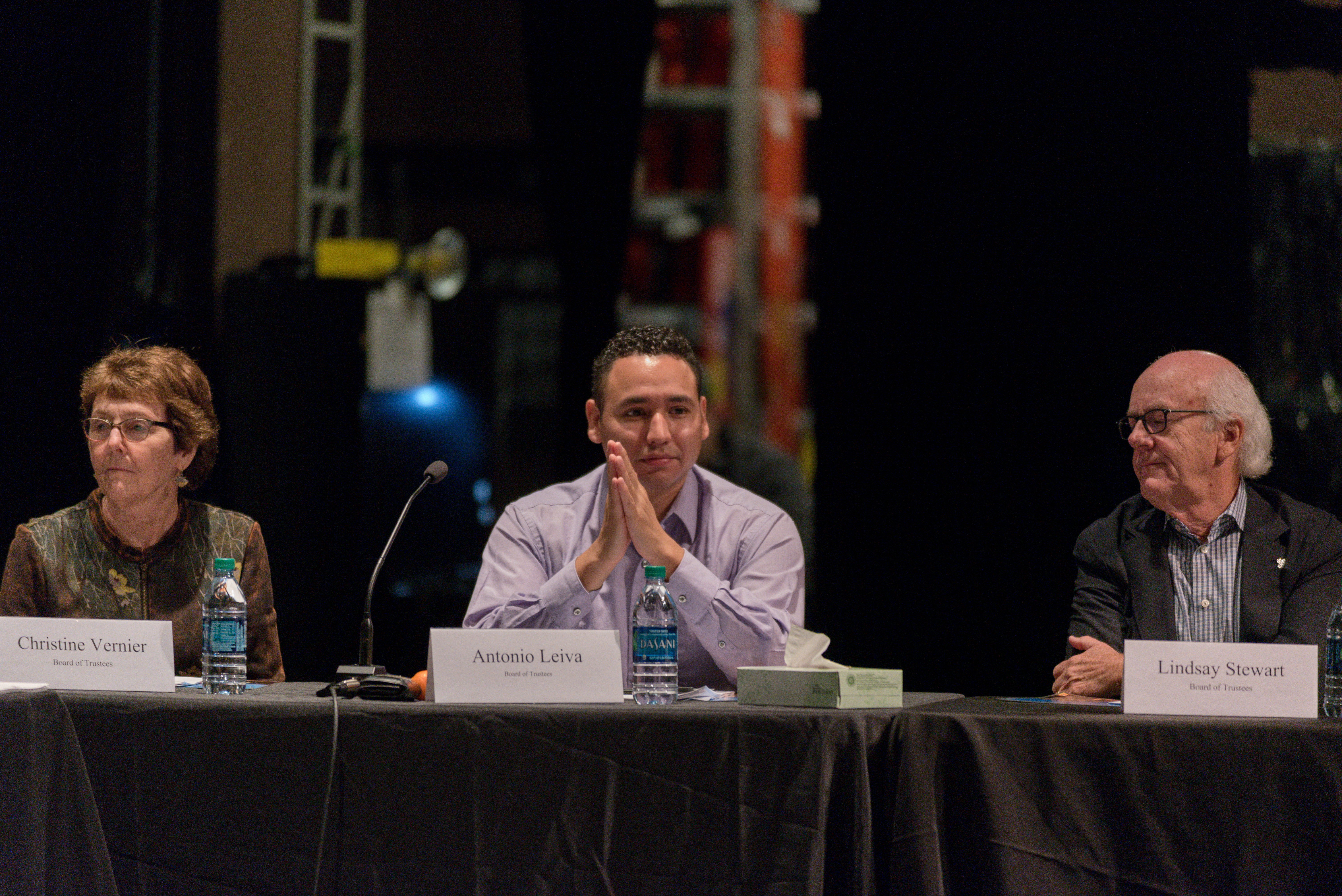On March 8, International Women’s Day, more than 180 members of the Portland State community squeezed into La Casa Latina Student Center to celebrate Mexican painter Frida Kahlo (1907–1954), who embraced self-empowerment long before feminism’s hashtag-fueled fourth wave.
The event Frida Fest is an annual collaboration between La Casa Latina, the Women’s Resource Center and the Chicano/Latino Studies department (CHLA). “By highlighting Chicana/Latina women such as Kahlo during International Women’s Day, we include a group often overlooked as a source of resistance and contributors to feminist ideology today,” said Auna Castellon, student program assistant for La Casa Latina and research assistant in Chicano/Latino Studies. “The celebration of Kahlo allows for critical analysis on the diversity of women’s experience. She serves as a gateway for a global exchange of feminist concerns.”
Painted on La Casa Latina’s wall is a smorgasbord of campus imagery: university buildings, a snippet of the Portland skyline, flying books and graduation caps. Seemingly out of place in the middle of it all, two figures hold hands and dance amid a glowing green vortex from which emerges a kaleidoscope of monarch butterflies.
Butterflies—symbols for rebirth—lent themselves to one of Kahlo’s most famous works, “Self-Portrait with Thorn Necklace and Hummingbird” (1940). Of her 143 paintings, 55 were self-portraits. “I am my own muse,” the artist once said. “I am the subject I know best.”
In her “Self-Portrait With Cropped Hair” (1940), Kahlo dons a suit, clutches a pair of scissors and sits surrounded by tufts of disembodied dark hair. The artist cut off her hair a month after her divorce from Mexican muralist Diego Rivera and painted the portrait shortly thereafter.
Kahlo rejected traditional beauty standards and gender norms and embodied the complexities of womanhood throughout her life. She suffered from polio as a child, and a bus accident when she was a teenager left her physically handicapped. With adulthood came her tumultuous marriage to Rivera, their respective infidelities—hers with men and women—a miscarriage and the discovery of her inability to bear children. She channeled these pains and passions into paintings—some vibrant with color, wildlife and foliage; others dark and mournful; all deeply symbolic.
As with 2016’s “be proud of who you are and where you come from” and 2017’s “embrace the complicated contexts of one’s subjectivity,” this year’s Frida Fest theme “unveiling hidden injustices” was open to interpretation through mediums including arts and crafts, slam poetry and a photo booth.
“This year’s theme resonated with many,” Castellon said, “as the #MeToo movement has empowered women to speak and share their stories through creative, healing and artistic avenues, and this event allowed for a safe space for Chicana/Latina sisterhood to flourish.”
Several attendees shared poetry, personal essays and musings. Though most of the speakers did not expressly mention Kahlo, their words reflected the artist’s legacy of self-exploration and resistance. Many spoke of the walls that aim to entrap Mexican immigrants and concepts of femaleness, and of the intersection of these identities.

The monarchs painted on Casa Latina’s wall appear to be freeing themselves from something: their chrysalises, maybe, or the wall itself. Across from the mural, PSU student Liz Rodriguez took to the microphone to read an untitled original poem:
“Mariposa atrapada…
No te dejes sofocar
Por las paredes imaginarias
Que no te dejan volar
No desconfies de tus habilidades
Si mucho mas puedes hacer
Que tus esperanzas renazcan
Y tus alas te lleven a grandes alturas
Por que eres Mariposa, ya no eres oruga.”
“Caged butterfly… / Do not let yourself be suffocated / By the imaginary walls / That do not let you fly. / Do not mistrust your abilities / If you can do much more. / May your hopes be reborn / And your wings take you to great heights. / Because you’re a butterfly; you are no longer a caterpillar.”







